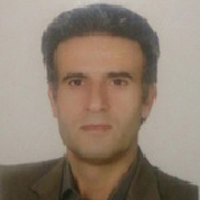Evaluation of the Effect of Land-Use Changes on the Spatio-Temporal Pattern of Land Surface Temperature and Heat Islands in Ahvaz City Using Satellite Images
Land surface temperature (LST) is one of the important parameters in the study of climate change and physical processes of the earth's surface. Rising land temperature causes the phenomenon of heat islands, which is caused by changes in land-use and land cover in urban areas and today has become a major environmental concern. Ahvaz metropolis, as the capital of Khuzestan province in southwestern Iran, has undergone many changes in land-use and land cover in recent years and has enjoyed significant population growth. In recent years, the pattern of unbalanced urban development in Ahvaz has led to the destruction of agricultural lands, vegetation and gardens around the city as one of the most important factors balancing the land surface temperature. This has led to an increase in land surface temperature and the formation of heat islands. The purpose of this study is to investigate land-use changes in Ahvaz and its effects on spatio-temporal patterns of land surface temperature and heat islands in the years 2002-2021.
First, the land-use changes were studied and then, in order to evaluate the relationship between the changes in each Land-use and the land surface temperature, the maximum temperature in each land-use was determined and then the amount of changes was investigated. Landsat 7 ETM+ (2002) and Landsat 8 OLI/TIRS (2013/2020) images downloaded from the USGS. Object-oriented method was used for classification. Educational samples were implemented on the image surface and their corresponding objects were selected as educational samples for each class. The classification was done by SVM algorithm and the user maps were classified into four classes including vegetation, barren areas, constructed areas and water areas. In this study, estimating the LST was performed base on separate window Algorithm and with Landsat 7 ETM+ band 6 and Landsat 8 OLI/TIRS band 11 data. In this Study, LST was estimated using Split-Window (SW) algorithm on Landsat-7 ETM+ and Landsat-8 OLI/TIRS Thermal Infrared (TIR) bands. Then the NDVI values, Vegetation Proportion and Radiated Power were obtained. Finally, The LST value was extracted based on degrees Celsius. In this study, Pearson correlation coefficient was used to investigate the relationship between LST and air temperature. RMSE values was used to compare the estimated temperature by SW algorithm and the measured temperature by Field research. Also, two indices UHII and UHIII were used to calculate the intensity of heat islands. These indices evaluate the LST using the values of vegetation in one area.
According to the results of this study, Kappa coefficients and overall accuracy were 74% and 76% for year 2002 map, 78% and 85% for year 2013 map and 88% and 93% for year 2020 map, respectively. The area of built-up and barren areas has increased and the area of vegetation and water areas has decreased. The rate of increase in land-use of the constructed areas from 2002 to 2020 was about 579.69 hectares and the decrease in vegetation cover was 3200.15 hectares. The barren areas have increased by 2521.66 hectares from 2002 to 2020. Pearson correlation coefficient between air temperature and LST values of 0.65% is obtained, which shows a positive correlation. The RMSe values in comparison with LST and measured temperature by Field research for the images of 2002, 2013 and 2020 was 1.79, 1.66 and 0.98 degrees, respectively. According to the results, the LST values in year 2002 fluctuated about 24.48-42.55, in year 2013 about 26.32-44.47 and in year 2020 about 28.13-46.65 degrees Celsius. The results of LST show an increasing trend of temperature during the period 2020-2020. After estimating the LST, the maximum temperature of each user was determined, which showed the increasing trend of temperature in all applications. The decreasing trend of vegetation has a direct effect on increasing LST in this land-use. The temperature of this land-use has increased by 6.32 degrees in 2002-2020. Over a period of 18 years, the LST in built-up areas and barren areas has increased by 4.10 and 5.26 degrees, respectively. In order to study the spatio-temporal patterns of LST and heat islands, first with NDVI index, vegetation status in each year was divided into three classes of low, medium and high vegetation and then LST values in each category were determined. According to the results, the highest temperature occurred in the floor with low vegetation. The correlation between the two variables LST and NDVI was significant and regression between them showed an inverse correlation that indicated a negative relationship between LST and vegetation. Therefore, vegetation plays an important role in reducing the intensity of the heat island. UHIII index values in the low vegetation class from 0.63 to 0.67, in the medium vegetation class from 0.57 to 0.61 and in the high vegetation class from 0.51 to 0.54 it is arrived. The highest intensity of heat islands in 2002, 2013 and 2020 were in the southern, eastern and northwestern parts of the city, respectively.
According to the research results, land-use changes in the study period have caused an increase in land surface temperature. The highest temperatures have occurred in built-up areas and barren areas; this is due to the increase in the area of built-up and barren areas. Decreased vegetation has a direct effect on increasing LST in this land-use. The NDVI, UHII, UHIII indices and LST values were used to study the spatio-temporal patterns of land surface temperature and heat islands. The results indicate high temperatures in the vegetation with low vegetation. Due to the correlation of NDVI values with land surface temperature and the intensity of heat islands, the necessity and importance of vegetation protection as a very important variable to regulate the air temperature in the city is essential.
- حق عضویت دریافتی صرف حمایت از نشریات عضو و نگهداری، تکمیل و توسعه مگیران میشود.
- پرداخت حق اشتراک و دانلود مقالات اجازه بازنشر آن در سایر رسانههای چاپی و دیجیتال را به کاربر نمیدهد.




